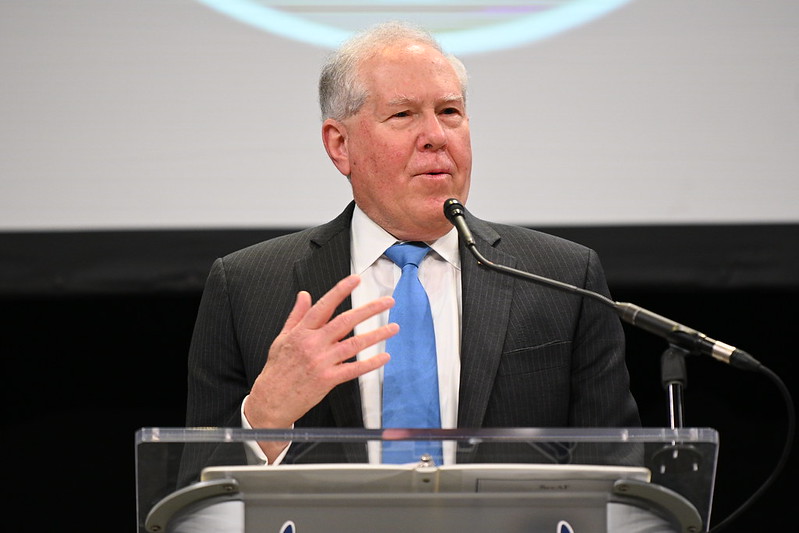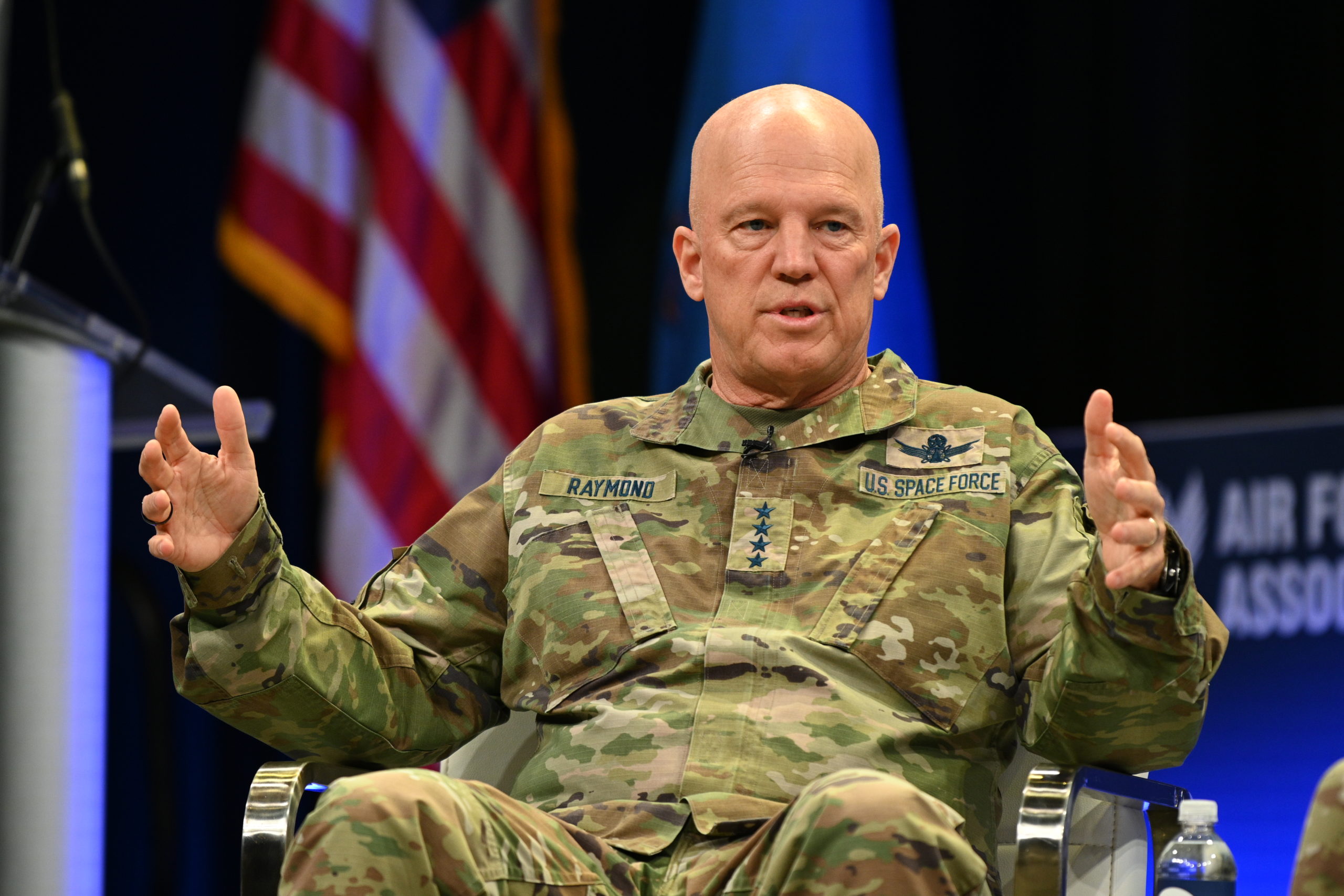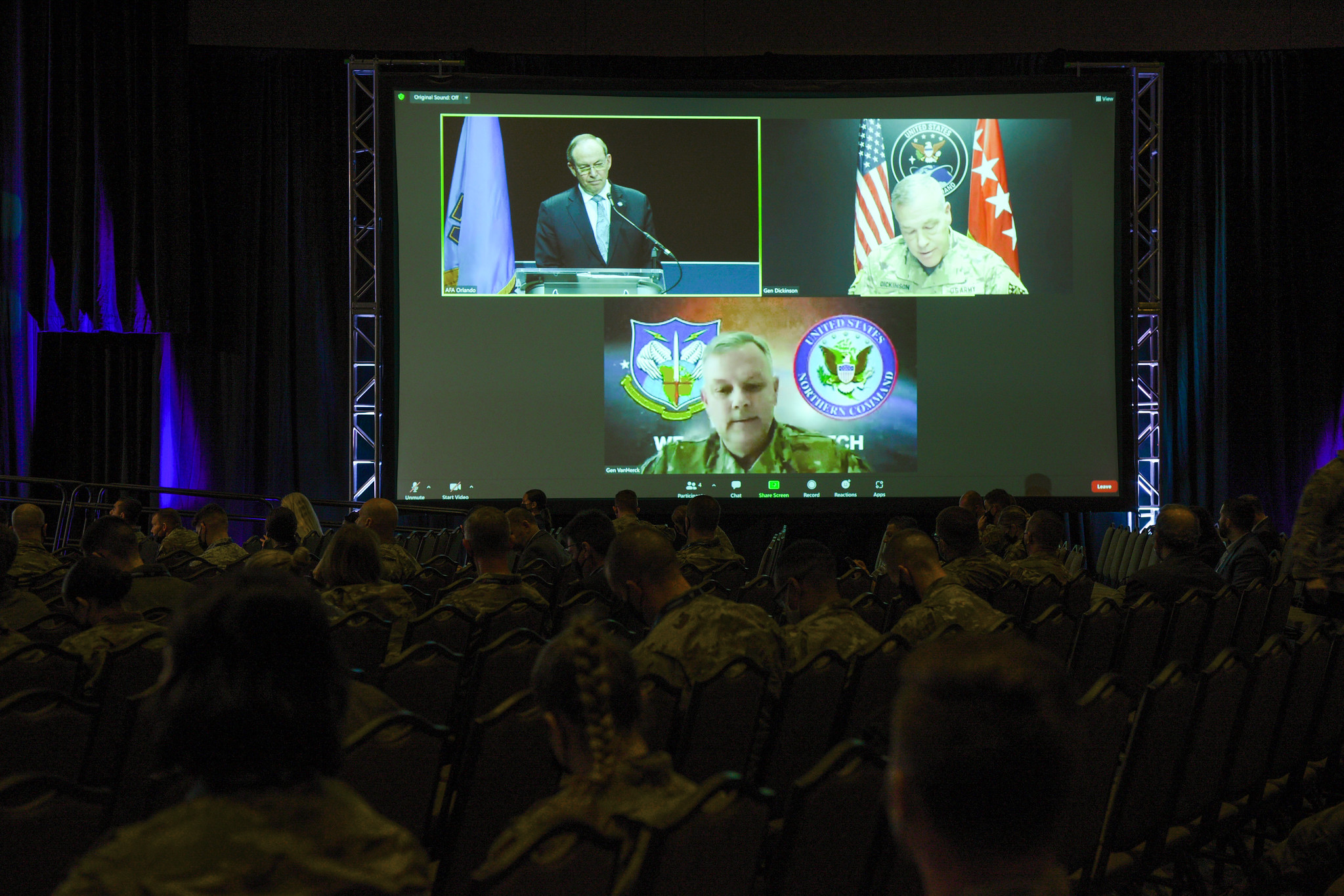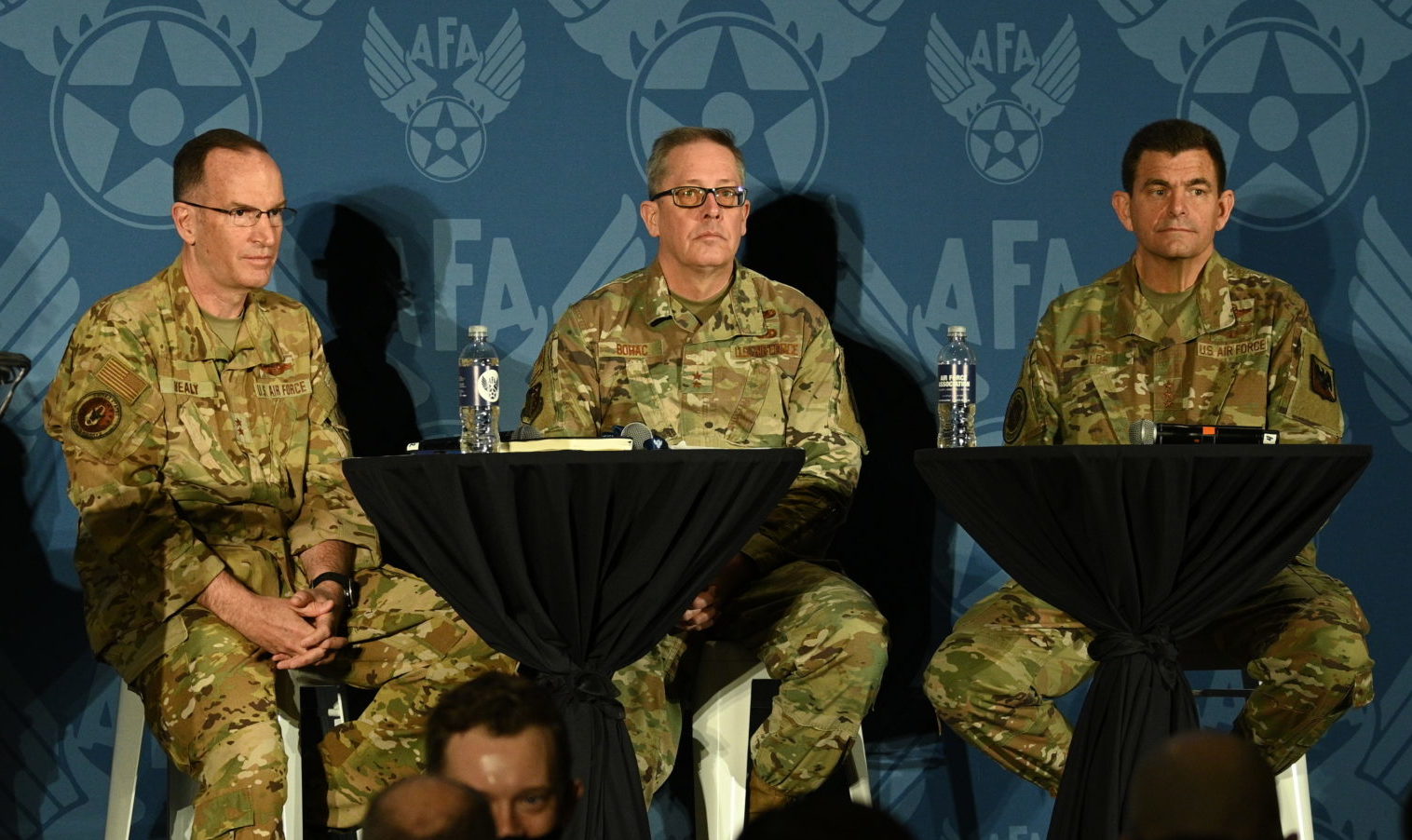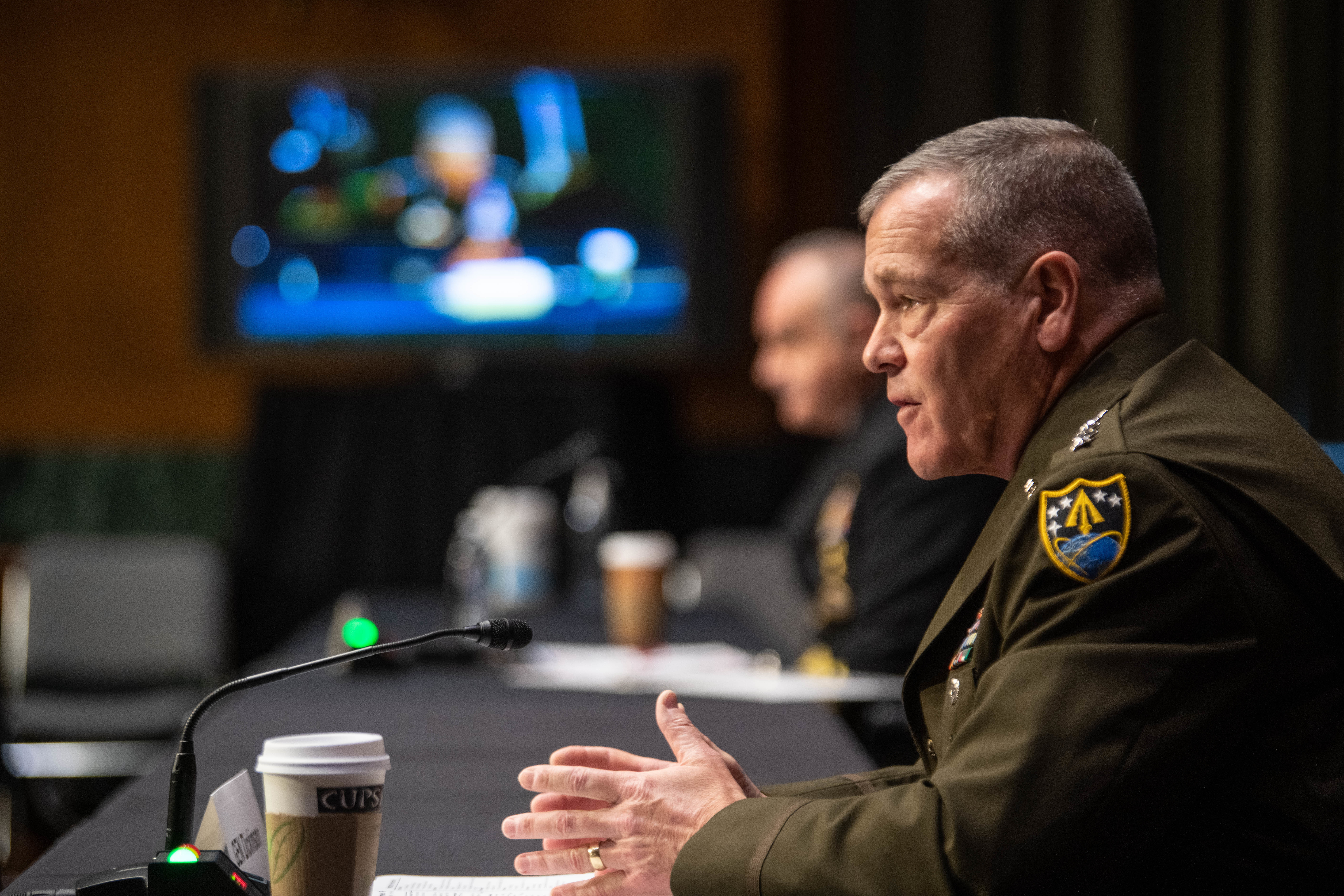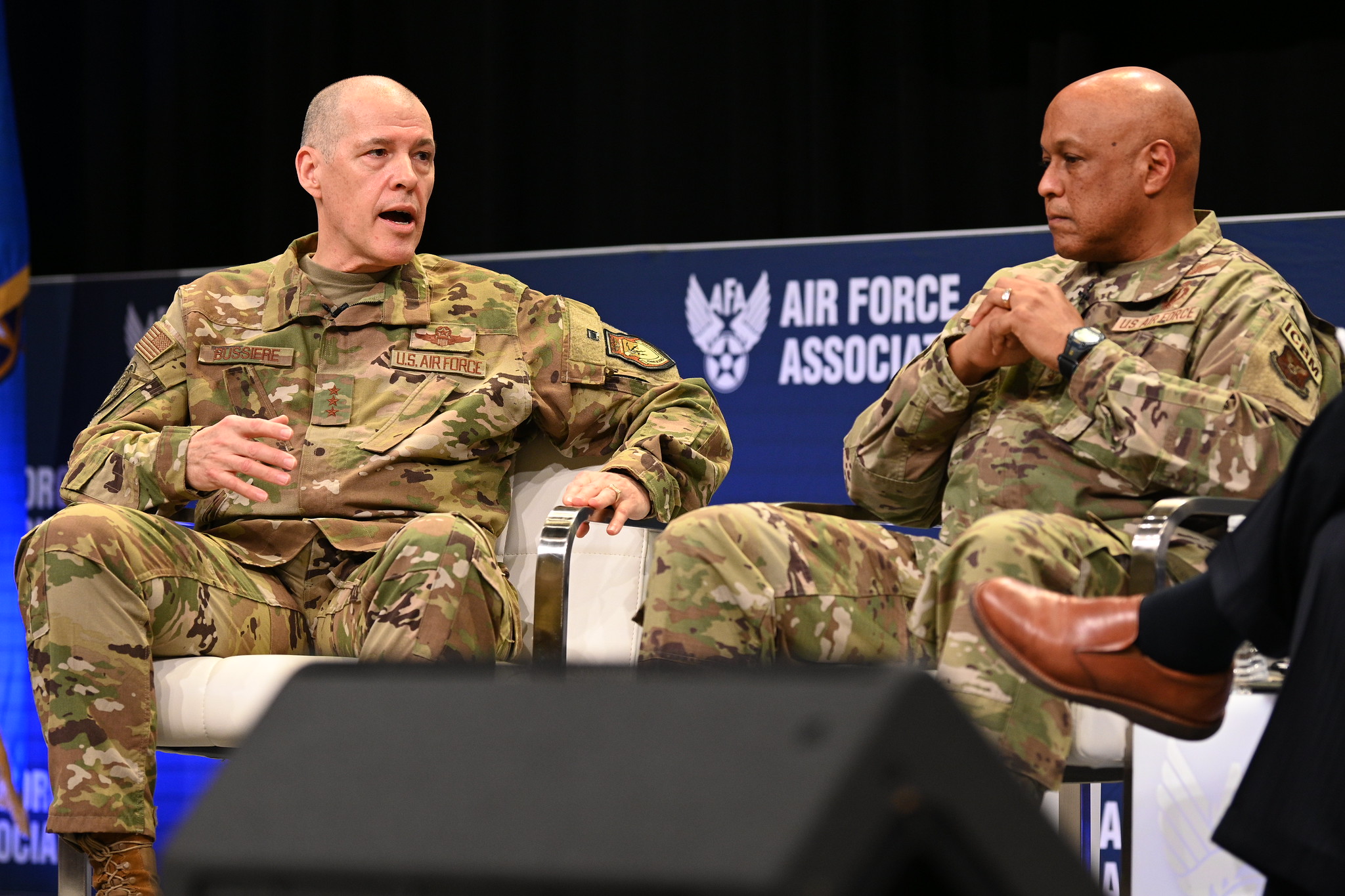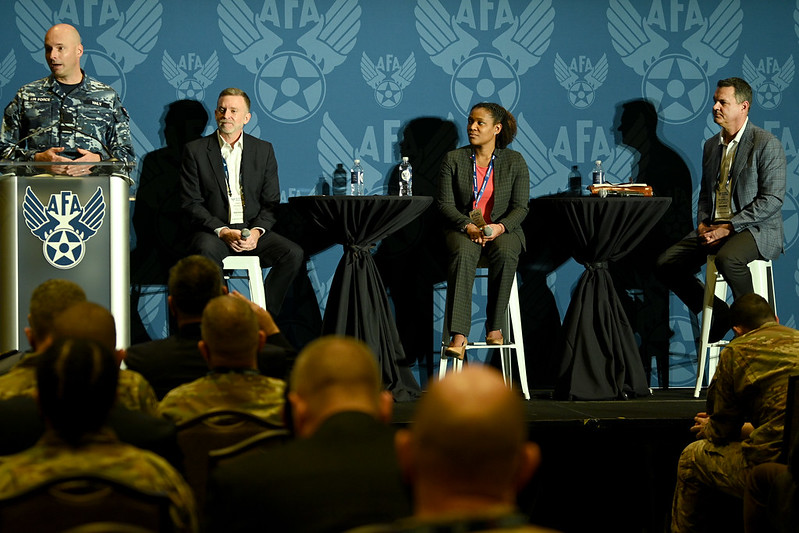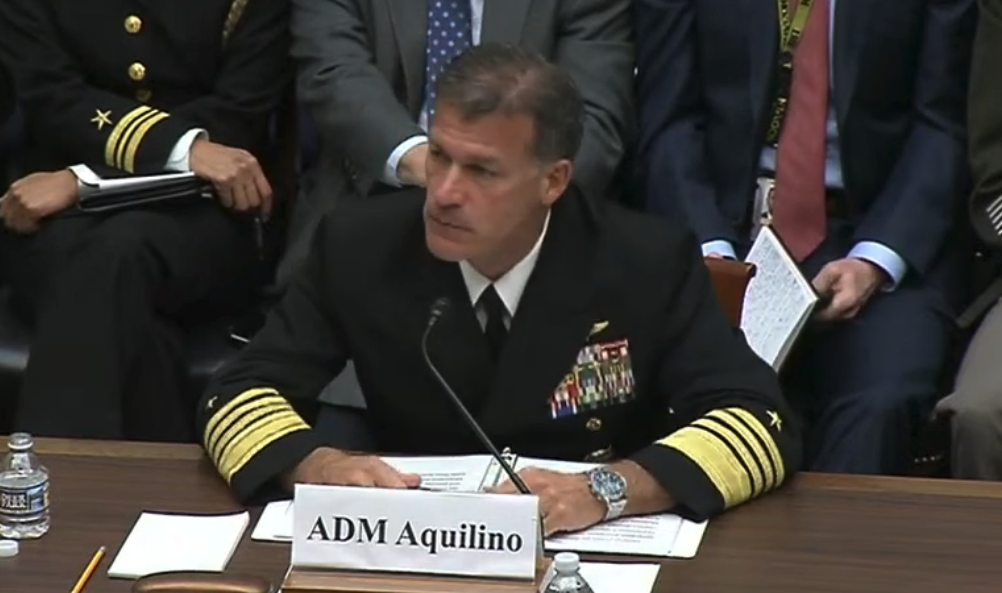Russia’s invasion of Ukraine, along with China’s threatening moves toward Taiwan and its new campaign to build up its strategic nuclear forces, likely signal an end to debate about modernizing the full nuclear triad, according to Air Force Secretary Frank Kendall.
“I think that sort of removes some of the arguments that maybe we should have a smaller nuclear deterrent, maybe without as many legs of the triad, Kendall said at the annual McAleese conference March 9. “I think those arguments are pretty well put to bed now, given what China’s doing.”
The Air Force, Kendall said, is likely to get the green light to move forward with the Ground Based Strategic Deterrent intercontinental ballistic missile system, B-21 bomber, nuclear Long Range Stand Off missile, and command and control modernization.
“You’ve all seen … that China is modernizing its nuclear [force] and expanding it significantly,” Kendall said. “That’s a problem we have to deal with.”
Russia’s move on Ukraine was unthinkable to some in government just a few weeks before but has demonstrated that the unthinkable can happen and that the U.S. must do what’s necessary to deter them both, Kendall said:
Russia’s invasion shows that war between big nations “still happens” and that war with China in the Pacific is a “real … possibility.”
“A lot of people didn’t think that he would do it,” Kendall observed of Russian President Vladimir Putin’s invasion. “We’ve been watching this. I’ve seen him build up his forces multiple times on the borders of Ukraine. And as we watched this one, this time was different. It was clearly not a show of force this time. He was serious about it. And a lot of people didn’t expect that.”
Now, however, “I think, for better or for worse—certainly for worse for the Ukrainian people, ultimately, for worse for the Russians—we’ve had a wake-up call. We’ve had an emotional event that says that, ‘Yes, war at scale, among great powers, among modern powers, can actually happen.’ It can also happen in the Pacific.”
Despite the Ukraine invasion, Kendall said his priority is still “China, China, China” because that country has invested for 30 years in creating a military capable of challenging the U.S. in every domain, including space. Making America’s space assets “resilient” is the top priority of Kendall’s seven “operational imperatives.” Also, “we cannot give the other side impunity to operate in space,” and other countries’ assets there must be held at risk by the U.S., Kendall asserted.
“So, we’re in a whole new world, there.”
That said, “there is a huge unfunded requirement coming in space,” Kendall warned. “When you look at what we need to have”—and some of those space architectures are being built now—“there’s a bill there, that’s coming. “We’ll start to pay it … when you see [the fiscal year 2023] budget,” but bigger bills will come later. In answer to a question, Kendall said he’s “not terribly worried” about the Space Force being able to absorb a lot of new funding, should it be appropriated. “We’re pretty good at spending money in the Pentagon,” he dryly observed.
Kendall said he is “comfortable” with the fiscal 2023 budget.
“I think we’ll be able to balance those things that we’ve talked about … and move forward. But as I look beyond that, I do see challenges ahead. We have tough choices ahead of us in the next several years as we better define the things we need and then figure out how we’re going to pay for it.”
Although he would not discuss particulars about the unreleased fiscal 2023 budget, Kendall hinted that it doesn’t have as much in it for missile defense as he would like.
“What I became alarmed about in 2010 … and what I’ve been watching progress ever since, is the purchase of ballistic and cruise missiles” by China, “targeted at our high-value assets.” The Air Force needs “good warning and tracks, particularly for ballistic missiles. So if there were one area where I think we would need much more robust capability” and funding, “that would probably be it.”
More generally, he said, if he had “extra” money, he would spend it on more analysis to make sure the programs being selected to pursue, “and modernization in general,” are optimized to USAF’s true needs. Although in the past few years, “‘going fast’ has been emphasized … it’s really important that you go in the right direction … about where you make those investments.” His seven “imperatives” are about “making sure we get all that right.”
Kendall also said there will not be as many efforts to divest aircraft, meant to free up money for new programs, in the fiscal 2023 request as there were in the fiscal 2022 budget plan.
“We made the case last year,” he said, and Congress “came through pretty well. I’m pretty happy with what they did last year. The exception was the A-10.” But “I will tell you … I don’t think you’re going to see the same scale of requested retirements in this budget as you did last year. There will still be some. Going forward, there will be some hard choices, further out.”
Kendall said his new imperatives for tactical and strategic uncrewed aircraft are priorities because the manned aircraft force now envisioned is just too expensive. He also said the F-35’s sustainment costs are not going down to where the Air Force needs them to be.
“What we’re looking at is a force in which the F-35 is the ‘low end’ of a ‘high-low mix.’ That is not going to work,” Kendall said.
“We’re not going to get the F-35 sustainment cost down to a level where that’s realistic.” While he hopes production costs will keep going down—something the program office and Lockheed Martin have said are unlikely—even at $80 million a copy, the F-35 is “not a cheap airplane. So we’ve got to figure out a way to get the capacity and quantity that we need.” He quoted the trope that “quantity has a quality all its own,” and added, “that’s very true.”
The Air Force, he said, “needs numbers, particularly in a situation where you can expect attrition. You need the ability to expand to deal with these threats. The higher-end, more expensive aircraft are not going to get you there.”
In the omnibus defense bill, the hypersonic AGM-183 Air-launched Rapid Response Weapon (ARRW) took a major cut, giving up half its funding to longer research and development. Kendall noted that “there was a lot of enthusiasm for hypersonics in the previous administration, and I think I’ve made the comment why I think China is developing hypersonic capabilities. And we have to think more carefully about what we need” in that arena, and not just “mirror what they’re doing.” Kendall said. “We need to take a look at our whole portfolio, not just hypersonics.” But with regard to ARRW, he noted a series of test failures and said he’d spoken to Lockheed Martin recently, saying, “They think they’re working their way through that” and will get back to flight testing “shortly.”
However, “ARRW still has to prove itself,” he said.
